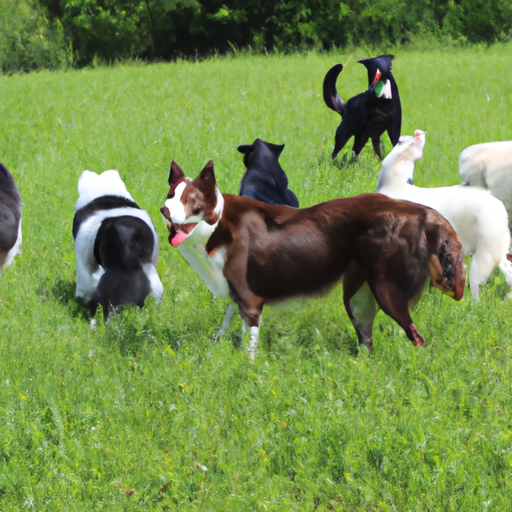If you’ve ever observed a Border Collie rounding up sheep or a Corgi nipping at the heels of cattle, you’ve witnessed the fascinating spectacle of herding behavior in dogs. This instinctive drive, deeply ingrained in the DNA of certain breeds, is a remarkable testament to the long-standing relationship between dogs and humans.
Table of Contents
- The Origins of Herding Behavior
- The Traits and Characteristics of Herding Dogs
- Training Dogs with Herding Instincts
- Positive and Negative Aspects of Herding Behavior
- FAQs
Key Takeaways
- Herding behavior is a natural instinct in certain dog breeds that were bred specifically for this purpose.
- Training can help manage herding behavior and redirect it into productive outlets.
- Understanding and addressing the needs of herding dogs can prevent behavioral issues.
The Origins of Herding Behavior
The innate herding instinct in dogs is a product of centuries of selective breeding. Humans have harnessed the natural abilities of dogs to manage livestock, leading to the development of specific breeds designed for this task. These breeds, often referred to as herding dogs, have been selectively bred over generations to enhance their natural instincts and abilities to control the movement of other animals.
The Traits and Characteristics of Herding Dogs
Herding dogs are known for their intelligence, agility, and energy. Their keen sense of observation and quick responsiveness make them excellent working dogs. Some common herding breeds include the Border Collie, Australian Shepherd, Shetland Sheepdog, and the Belgian Malinois.
One of the key characteristics of herding dogs is their method of controlling livestock. Some breeds utilize what’s known as “eye” – a deep, fixed stare to intimidate livestock. Some dogs herd by barking, nipping at heels, or even by circling the animals. The specific techniques used can vary greatly depending on the breed and the type of livestock they were bred to handle. For more about herding dog breeds, visit Onetopdog.
Training Dogs with Herding Instincts
Training a herding dog can be a rewarding experience, but it requires understanding their instinctive drives. It’s important to remember that these behaviors are deeply ingrained in the dog’s genetics and can’t be completely eliminated. However, with proper training, these instincts can be channeled into productive outlets such as dog sports or herding trials.
Training should start early, ideally when the dog is a puppy. Basic obedience training is a must, but beyond that, herding dogs typically thrive when given tasks to perform. Sports like agility and herding trials can provide an outlet for their energy and instincts.
Positive and Negative Aspects of Herding Behavior
Herding behavior comes with both positive and negative aspects. On the positive side, herding dogs are highly intelligent and trainable, making them excellent companions and workers. They have a strong work ethic and are usually eager to please.
On the downside, these dogs can become bored and destructive if not given enough mental and physical stimulation. They may also exhibit herding behavior in inappropriate contexts, such as trying to herd children or other pets. This can lead to problems such as excessive barking, nipping, or obsessively chasing moving objects. For helpful tips on managing these behaviors, check out Onetopdog.
FAQs
What is herding behavior in dogs?
Herding behavior in dogs is an instinctive drive to control the movement of other animals. This is seen predominantly in breeds that were specifically developed for herding livestock.
Can herding behavior be trained out of a dog?
While herding behavior can’t be completely eliminated from a dog, it can be managed through training. Engaging your dog in activities that channel their herding instincts can also help.
Are all herding dogs the same?
No, not all herding dogs are the same. Different breeds have different herding styles and techniques, largely influenced by the type of livestock they were bred to manage.
Can any dog breed exhibit herding behavior?
While any dog can exhibit some form of herding behavior, it is most commonly seen and most strongly expressed in breeds specifically bred for herding.
In conclusion, herding behavior in dogs is a natural instinct that, when understood and properly managed, can be a source of fulfillment for these active, intelligent animals. As a caregiver to a herding dog, it’s crucial to provide them with adequate mental and physical stimulation to satisfy their hardwired instincts.



